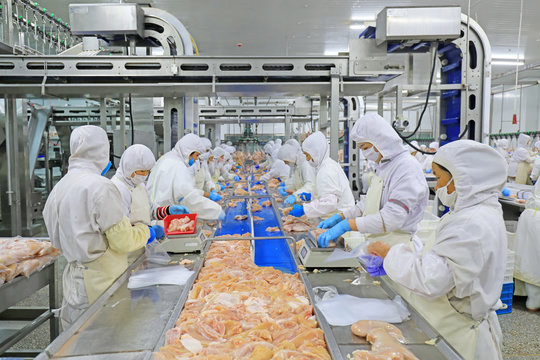
How to Legally Import Frozen Chicken into The EU/USA From Thailand
Importing Frozen Chicken into EU/USA From Thailand –
The poultry trade has grown exponentially round the world, with Thailand emerging as a power house when it come to the exportation of high – quality frozen chicken. Businesses and distributors in the EU and USA are increasingly looking for poultry from Thailand due to it cost – effectiveness, consistent quality and holds to international food safety standard.
However, importing frozen chicken into these regulated markets requires in depth knowledge of trade laws, sanitary protocols, documentation procedures, and customs compliance. This comprehensive guide offers insights from industry professionals on how to legally and efficiently import frozen chicken into the EU and USA from Thailand.
Understanding the Regulatory Landscape
Legal Framework in the EU and USA
The European Union and the United States maintain stringent food safety and import regulations to protect public health. These include rules under:
* EU : European Food Safety Authority (EFSA), Regulation (EC) No 853/2004 for hygiene of foodstuffs, TRACES system (Trade Control and Expert System)
* USA : United State Department of Agriculture (USDA), Food Safety and Inspection Service (FSIS), and Food and Drug Administration (FDA)
Importers must comply with the specific requirement set by each governing body to avoid legal penalties or shipment rejection.
Step by Step Guide to Legal Importation
Sourcing from an Approved Thai Exporter
Not all Thai poultry producers are approved for export in to the EU or USA. Choose a supplier registered and certified by
* Department of Livestock Development (DLD) in Thailand
* Listed under EU-approved establishments or recognised by the USDA
Request he following from your Thai supplier:
* HACCP Certification
* Halal certification (if required by target demographic)
* Health certificates issue by the Thai Government
* facility registration and inspection records
Registering as Importer
Before placing your first order, you must become a registered importer.
* In the EU
* Register with your national Competent Authority (e.g., DEFRA in the UK)
* Gain access to the TRACES NT platform
In the USA:
* Register with the FDA via the FDA Industry System (FIS)
* File a Prior Notice before shipment arrival
* Work with a Customs Broker Licensed by U.S Customer and Border Protection (CBP)
Documentation Checklist
Correct documentation is non-negotiable. Key documents include:
1. Commercial Invoice
2. Vill of Lading (or Air Waybill)
3. Packing List
4. Health Certificate issued by DLD
5. Veterinary Certificate (for EU)
6. Certificate of Origin
7. Customs Declaration Forms
Errors in documentation are leading cause of cargo detention and rejection at the border. Double – check all entries, and ensure translations (if needed) are accurate.
Temperature Control and Packaging Standards
Cold chain compliance is essential when transporting frozen meat internationally.
* Ensure product remains at -18 degree or lower through out transit
* Use insulated containers or reefer shipping units
* Packaging must be tamper-proof, labeled with production/expiration dates, and include country of origin
In the EU, Labels must also list:
* Registration number of the producing establishment
* Lot identification for traceability
* Instructions in the local language
Border Inspection and Sampling
At the EU Border Control Post (BCP) or U>S. Port of entry, your shipment will undergo
– Documentary check
– Identity verification
– Physical inspection (including temperature sampling)
If a shipment fails, it may be
– Destroyed
– Returned to the country of origin
– Re-exported
To minimise this risk:
* Pre-alert the port authorities
* Provide complete documentation
* Work with experienced freight forwarded and brokers
Duties, Tariffs and Trade Preferences
Frozen poultry imports are subject to tariffs and customs duties, unless covered by a trade agreement.
* EU GSP Scheme: Thailand may benefit from reduced tariffs under the Generalised scheme of Preferences (check Status)
* USA: Standard MFN (Most Favoured Nation) duties apply; check HTS Code 0207
Accurate classification using HS Codes is vital. Misclassification can trigger audits and fines.
Compliance with Food Safety and Traceability Laws
Both the EU and US demand full traceability from farm to table. Importers must maintain:
* Supplier verification records
* Lot and batch tracking systems
* Recall procedures in case of contamination
Additionally:
* EU regulation 178/2002 mandates traceability at all stages of production
* US FSMA ( Food Safety Modernisation Act) requires foreign supplier verification program (FSVP)
Partnering with Third-Party Logistics Providers (3PLs)
Because frozen poultry is perishable, reliance logistics partners are critical.
Choose 3PLs with
* Experience in meat and poultry handling
* Knowledge of customs procedures
* Facilities for cold storage and reefer trucking
Ensure service level agreements (SLAs) cover:
* Transit Time
* Temperature monitoring
* Emergency response (e.g., delays, reefer malfunction)
Staying up-to Date with Trade Policies
Regulations change regularly due to health outbreaks (e.g., avian flu), political shifts, or economic policies. Keep abreast of:
* Import alerts and bans
* Changes to health certificate formats
* Updates to tariff schedules or quotas
Follow updates from:
* Thai DLD
* EU Rapid Alert System for Food and Feed (RASFF)
* USDA FSIS Import Library
Final Thoughts
Importing frozen chicken from Thailand into the EU or USA is a rewarding venture, but it’s also layered with regulatory, logistical and procedural complexity. By working with certified suppliers, ensuring complete documentation, maintaining cold chain integrity and staying informed on regulations importer can build a resilient supply chain and avoid costly errors.
With over two decades in the frozen poultry export space, we’ve seen that preparation and transparency are your greatest allies. Whether you are scaling your business or entering in to the market for the very first time, use this guide as your operational compass, and always aim for excellence, compliance and sustainability.
